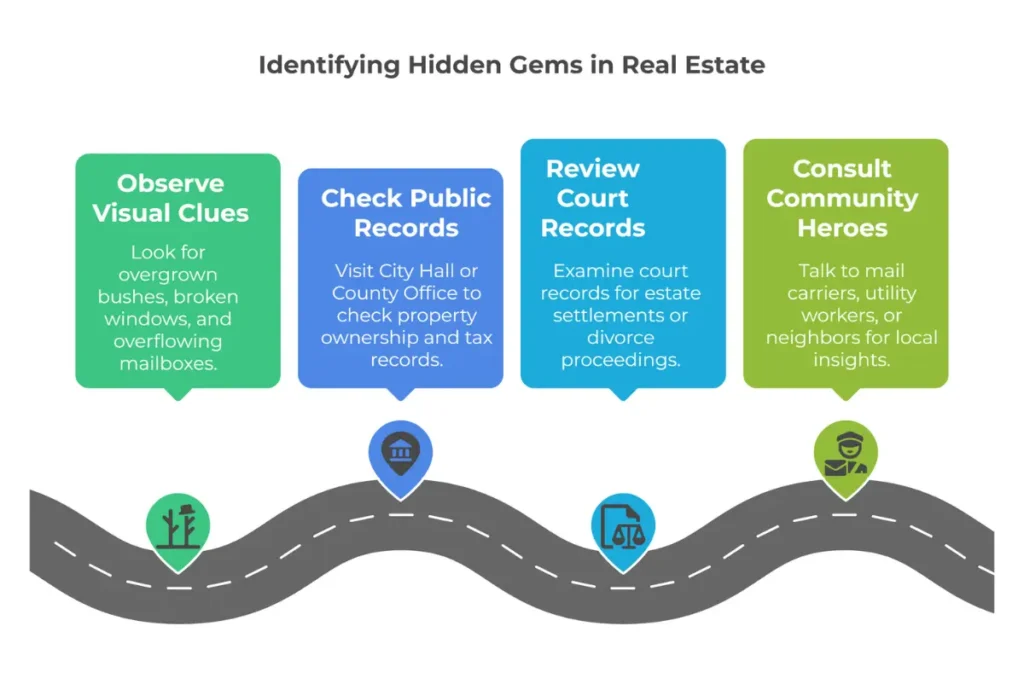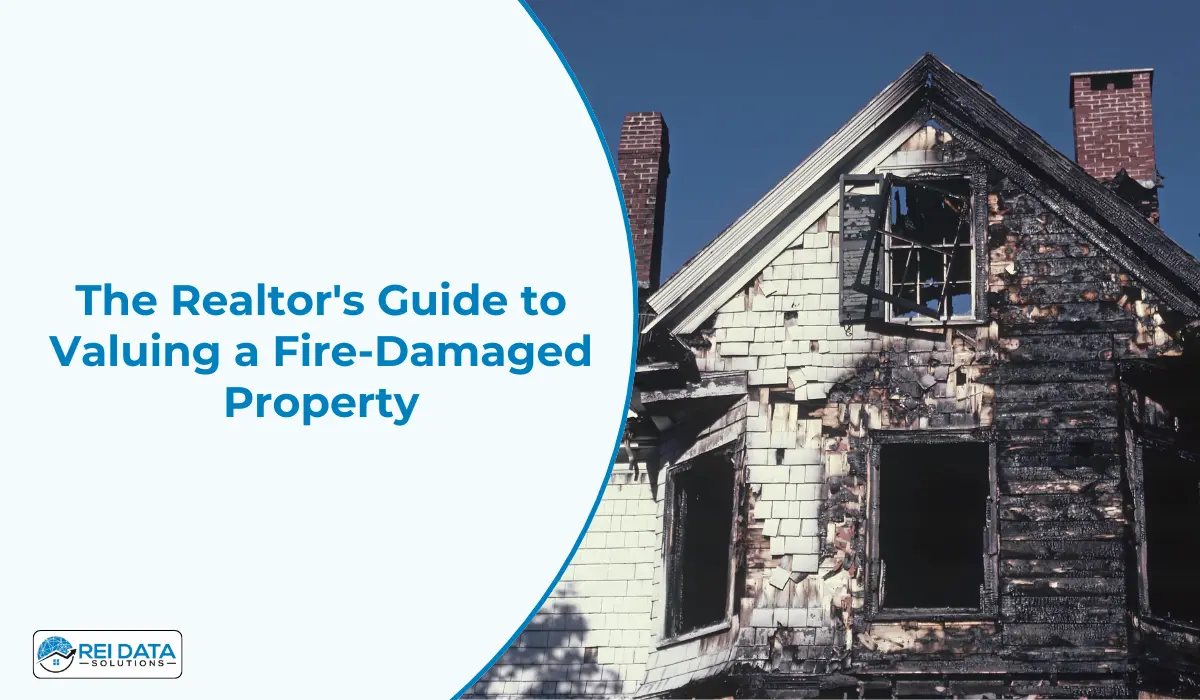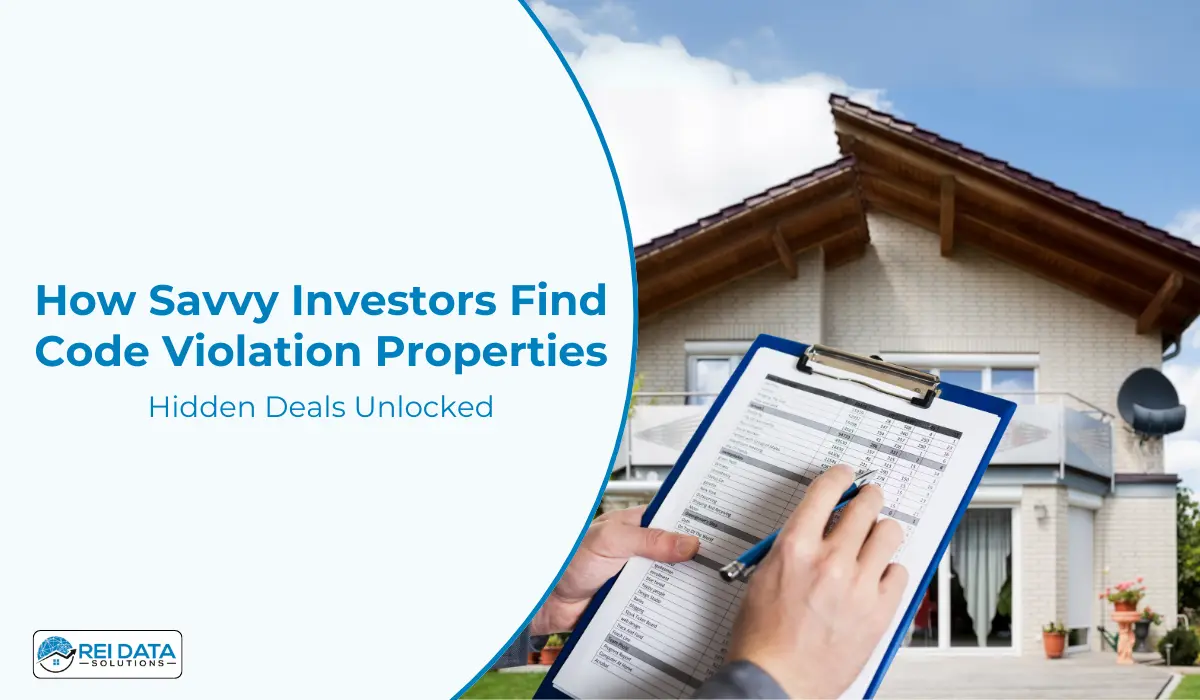Did you know that tens of thousands of properties in any given year fall into a unique category – empty, overlooked, and full of hidden potential?
Many mistake a vacant home for one that’s truly abandoned, and fail to determine which strategy applies to which property type.
Understanding that crucial difference is like unlocking a secret level in real estate, leading to incredible deals.
Demystifying Vacant and Abandoned Properties
Imagine for a sec, houses are like pets.
Some are just at the vet for a check-up (vacant), while others might have been lost and no one is looking for them anymore (abandoned).
What is a Vacant Property?
Think of a vacant property like a house whose owners are on a long vacation.
The house is empty, yes, but its owners still love it and plan to come back or do something with it. They might be away for summer, moving slowly, or fixing things up.
What does vacant mean?
It simply means empty or not being lived in.
Key Clues It’s Just Vacant:
- Lights might still turn on! The electricity and water are probably still working.
- It might look a bit messy, but not totally fallen apart. Maybe the grass is long, but the windows aren’t broken.
- Someone still owns it and knows about it. They just aren’t there right now.
Why are properties vacant?
- Maybe the owners moved to a new house but haven’t sold the old one yet.
- Someone inherited it after a family member passed away, and they’re still figuring things out.
- It’s being fixed up or renovated, so no one can live there yet.
- It could be a summer cabin or a winter home!

What is an Abandoned Property?
Now, an abandoned property is like a forgotten toy that’s been left out in the rain for a long, long time.
The owner seems to have given up on it entirely. No one is taking care of it, and it often looks sad and broken.
Key Clues It’s Abandoned:
- Very, very messy! Broken windows, doors hanging open, weeds everywhere.
- No lights or water. The utilities are probably turned off.
- Lots of official-looking papers stuck to the door, maybe about unpaid bills or taxes.
- It often looks like no one cares about it anymore.
Why is the Property Abandoned?
The owner has seemingly left it for good, often because they can’t afford it, or they just don’t want it anymore.
This can cause bigger problems for the neighborhood.
The Critical Difference: Why It Matters for a Real Estate Pro?
The biggest difference is who cares about the house!
- Vacant = Someone still cares, even if they’re away
- Abandoned = It seems no one cares anymore
For grown-ups who want to help these houses, this difference is super important.
- Vacant properties are usually easier to buy because you can talk to the owner.
- Abandoned properties can be trickier because it’s hard to find who owns them, or if anyone even wants to be the owner anymore. Sometimes, the government steps in to help.
Understanding this helps grown-ups decide if a house is a good opportunity to fix up or if it will be too much work.
How to Identify and Locate These Hidden Gems
So, how can you spot these unique homes? It’s like being a detective!
On-the-Ground Clues: Visual Indicators of Neglect
Next time you’re out, keep your eyes peeled for these clues:
- Overgrown bushes and tall grass: Like a jungle!
- Broken windows or doors: Or maybe windows covered with boards.
- Lots of mail stuffed in the mailbox or overflowing.
- Official-looking notices taped to the front door from the city or county.
- The overall look: Does it seem sad, forgotten, or just temporarily empty?
Public Records & Data Sources: Your Investigative Toolkit
Grown-ups have super-secret tools to find out about these houses!
- City Hall or County Office: They have records of who owns property and if they’ve paid their taxes. Unpaid taxes can be a big clue for an abandoned property.
- Court Records: Sometimes, when families are dealing with big changes (like a will after someone passes away, or a divorce), houses might become vacant while they sort things out.
- Community Heroes: Mail carriers, utility workers, and even neighbors often know a lot about the houses on their routes or streets!

Unlocking Lucrative Investment Pathways
The Profit Potential: Why Distressed Properties are Goldmines
Imagine finding a cool old toy that just needs a little fixing up. You buy it for a low price, make it shine again, and then it’s worth a lot more! That’s kind of how it works with these houses.
Owners of these homes are often in a hurry to sell. Maybe they moved away, or they can’t afford the repairs, so they’re usually open to selling at a lower price than a house that’s perfectly ready to live in.
Because these homes need work, there’s often more room to haggle over the price. It’s like negotiating for that cool car – you can talk about a deal that works for everyone. It can lead to a really good deal for people willing to buy it.
Then comes the best part: making them shine! Fixing up these houses can transform them into beautiful, cozy homes again. Once they’re all spruced up, they can be sold for a good profit, giving you a great reward for the hard work and creativity.
Key Acquisition Strategies
So, how do you actually get these houses?
One common strategy, especially for vacant properties, is simply talking to the owner. If you can find the person who owns the house, you can often make a deal directly with them. This happens before the house is even officially listed for sale, like finding a secret handshake for a deal!
Sometimes, if owners don’t pay their property taxes for a long, long time, the government might step in. They could then sell the house to get the money that’s owed. This is called a tax sale, and it’s a way for the city or county to get important funds while someone new gets a house.
Another way to get these houses is through foreclosures. This happens when someone can’t pay their house loan to the bank. The bank might then take the house back and sell it to try and get their money. Think of it like returning a borrowed item if you can’t take care of it anymore.
And then there are city auctions. If a house is truly abandoned and has become very run-down, the city might take it over. They can then sell it at an auction to someone who promises to fix it up and make it a safe, nice place again. It’s a fantastic way for the city to help clean up neighborhoods.
Value-Add & Exit Strategies
Once you have acquired one of these houses, it’s time for the transformation!
The biggest and often most rewarding step is to fix it up!
This is where the magic happens. It means putting in new floors, giving the walls a fresh coat of paint, fixing a leaky roof, or even making big changes like updating the kitchen. The goal is to make it beautiful and livable again, turning a neglected space into a welcoming home.
After the fixes, you can “flip” the house for better price. It’s a fast way to see a big change and a good profit.
Or, you might just rent it out for a steady income.
Either way, this gives the home a new purpose and provides a place for people to live.
Navigating the Challenges and Mitigating Risks
Even the most exciting treasure hunts have tricky parts!
Working with these vacant and abandoned properties can definitely have some challenges. It’s important to be prepared for the unexpected when they take on such a project.
Legal & Title Complexities: Hidden Surprises
One big challenge can be the legal side of things. Sometimes, a house might have hidden surprises like old, unpaid bills or taxes that are still attached to the property.
These are called “liens,” and a new owner might have to pay them even if they didn’t know about them. It’s like finding an old parking ticket on a car you just bought – suddenly, you’re responsible for it!
Another tricky part, especially with abandoned properties, is figuring out who actually owns it. Sometimes, the original owner is gone, or there might be many family members (like heirs) who all have a claim to the house.
This can make it super complicated to buy, as you need to make sure everyone agrees to the sale.
Physical Deterioration & Repair Costs: Unexpected Fixes
Houses that have been empty for a long time can have some serious hidden problems.
Be ready for big fixes like a leaky roof that’s caused significant water damage, or even problems with the foundation that holds the entire house up.
These kinds of repairs can be expensive and take a lot of time to complete.
There can also be “yucky stuff” inside that needs special attention.
We’re talking about things like mold (which can grow in damp, dark places), old lead paint, or even asbestos, which are old building materials that aren’t safe anymore and need special clean-up by professionals.
Finding these unexpected issues can add a lot to the cost and time of fixing up a house.
Security & Liability Concerns: Staying Safe
Empty houses, sadly, can attract uninvited guests.
This might include vandals who break things, or even squatters, who are people who start living in an empty house without permission.
This can cause more damage to the property and make it harder for the new owners to begin their repairs.
Most importantly, there are safety first issues. Because these houses aren’t cared for, they can be dangerous.
Think about broken stairs, unstable floors, or sharp objects lying around.
Best Practices for Success and Ethical Engagement
It’s not just about making money; it’s about doing good things for the community!
Data-Driven Decisions and Accurate Information
The best pros use accurate information and tools to find out everything they can about a property before they buy it. This helps you make smart decisions and avoid big surprises. It’s like checking all the facts before a big test!
Community Impact & Responsible Investing
When you fix up an empty or forgotten house, it’s not just good for you; it’s good for the whole neighborhood!
It makes the street look nicer, makes people feel safer, and helps bring new life to the area. It turns a sad house into a happy home!
Building Relationships with Motivated Sellers
Even if a house seems abandoned, there’s usually an owner somewhere.
Try to find these owners and talk to them. They try to help the owners solve their problems, which makes it a win-win for everyone!
The Strategic Advantage: Leveraging Data-Driven Solutions
Imagine trying to find a needle in a giant haystack – that’s what finding these special houses can feel like!
But there are clever ways to make it easier.
Using tools and data sources can tell you if taxes haven’t been paid, if a house is going through a legal process (like someone passed away and the house is part of their estate), or if it’s about to be foreclosed on (meaning the bank might take it back).
These information can help you find the right owners and negotiate with them directly.
This is super helpful because it means they can find houses that aren’t even for sale yet, but their owners might be ready to sell them quickly!
FAQs
Q1: Is it okay to go inside a vacant or abandoned property?
No! Absolutely not! These properties can be dangerous and are private property. You should never go inside without permission from the owner or a caretaker who is allowed to be there. It's always best to stay safe and observe from the outside!
Q2: How does a house become "abandoned"?
A house becomes abandoned when the owner stops taking care of it, stops paying taxes, or just disappears. Sometimes, it happens after a family emergency, or if someone can't afford the house anymore.
Q4: Do all empty houses get fixed up?
Not all, but many do! Many real estate investors, flippers are looking for these types of houses because they see the potential to make them beautiful again. It helps neighborhoods look nicer and creates new homes for families.
Q5: What's a "flip" mean when talking about houses?
When you "flip" a house, it means you buy it, fix it up really fast, and then sell it again for a profit. It's like taking something old and making it new and valuable!
Your Next Step
We’ve learned so much about vacant and abandoned properties.
Vacant means someone’s just away, and abandoned means it’s been forgotten.
These homes, even with their challenges, offer amazing chances for pros to bring them back to life. It helps you make money, and it it also helps communities shine brighter by turning neglected spots into vibrant homes again.
So, the next time you see an empty house, you’ll know there’s a whole world of possibilities behind its walls, just waiting for a new story to begin!
Ready to find these hidden gems in your area?
Don’t just drive by and wonder! With the right tools, you can easily spot properties that are vacant or abandoned and full of potential.
Discover how our data services can help you:
- Pinpoint distressed properties: Find homes where owners might be ready to make a deal.
- Use smart filters: Look for vacant property or abandoned property leads right in your neighborhood.
- Unlock your next big opportunity by finding homes that are off the regular market!




